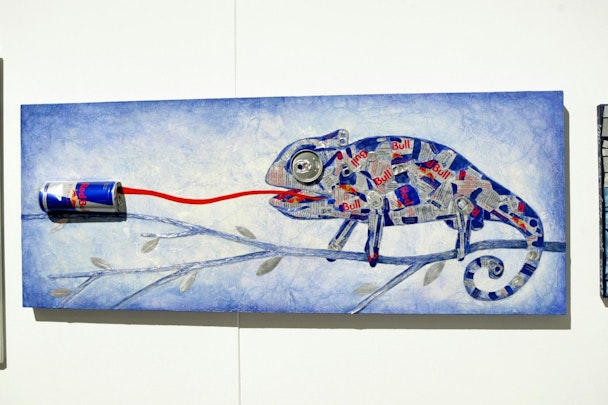The arts in the era of Trump: Do brands serve a role?
The annual two-week bender known as SXSW is upon us, where artists, industry, and brands collide, to sell, discover, learn, and, well... let loose. The conference, whose origins are rooted in thoughtful discussions around the future of media and entertainment, created the festival in a political and cultural environment not too dissimilar from today.

Credit: Red Bull
In 1986, SXSW's inaugural year, Ronald Reagan was president. America was embroiled in culture wars, where the "silent majority" found their voice in Nixon's administration and their rallying cry in Ronald Reagan, who first proclaimed he'd "Make America Great Again!" Nixon's war on Black America had taken root under the auspice of a "War On Drugs" and Reagan's administration prioritized the dismantling of federal funding for the arts and humanities.
With news that President Trump plans to gut funding for the arts, it begs the question: What is the role of SXSW 30+ years later?
The federal government budgets $740 million in funding for the arts through the National Endowment for the Arts, the National Endowment for the Humanities and the Corporation for Public Broadcasting. That amounts to .074% of the federal budget, an embarrassingly low figure for the richest nation in the world.
At SXSW, the presence of brands can feel suffocating, and often draws the ire of purists. What's been lost in the commercialization of SXSW is that the festival at its core is all about music, filmmakers, technologists... creators. For marketers, artists are the life source of our work.
Preserving and supporting the arts is as much our duty as marketers as it is in our own interests. If we can’t do it ourselves, the onus is on us to identify partners who can. The lust for art, music, and performance by the consumers we tirelessly seek favor with is undeniable. To support the arts consumers love serves the interests of all parties.
So why aren't brands better at working with artists? It isn't the money. Brands spent $595 billion dollars on brand activations in 2016 (a whopping 80,000x more than the federal government spends on the arts).
It's because brand marketers forget that the arts are rooted in scholarship and that marketing is rooted in commerce. The two can co-exist, but brands must be smarter about how they engage artistic communities across all disciplines. The unfortunate reality is that brands tend to trip over themselves in their attempts to work with artists because they treat these relationships as transactional exchanges, which mitigates the authenticity of the collaboration.
At SXSW 2017, 43 panels will address the era of Trump and sadly, zero will address how brands can (and should) play an active role in filling the void created by the new administration's policies.
It begs the question, who is doing it right?
Red Bull Arts, an experimental, non-commercial arts space, is one shining example of a brand engaging the artistic community in a way that preserves artist integrity and gives back to the art community, while creating elevated experiences for consumers. At its core, Red Bull Arts devotes everything from curatorial and production support for the presentation of new work, including artist fees, robust marketing activations and a massive exhibition space to “help realize challenging, institutionally scaled projects.” Beyond just offering conceptual and production support, Red Bull Arts also allows all artists to retain complete rights to their work.
The takeaway is that brands who prioritize relationships with their consumers are uniquely positioned to engage the creative community. Done correctly, the payoff can be enormous; to the artists that challenge and inspire, it can be lifesaving.
Adam Gorode is co-founder and chief executive of AGW Group
